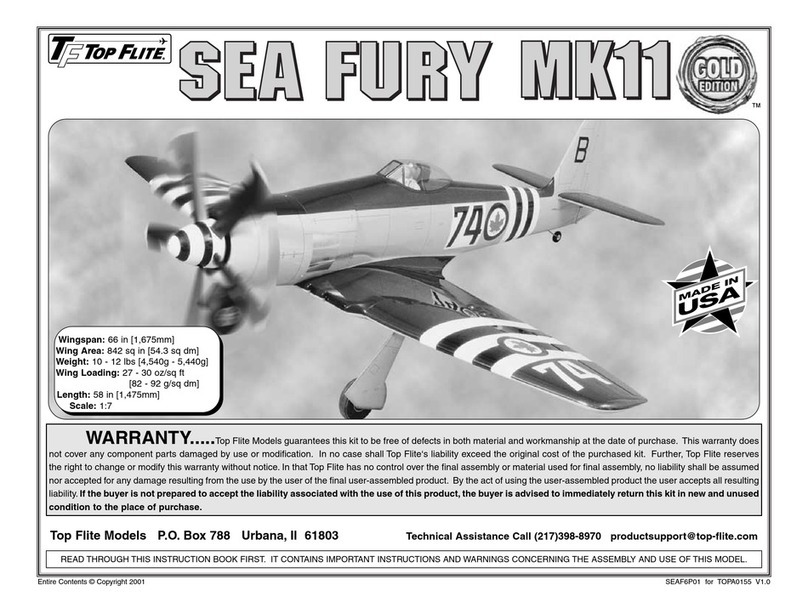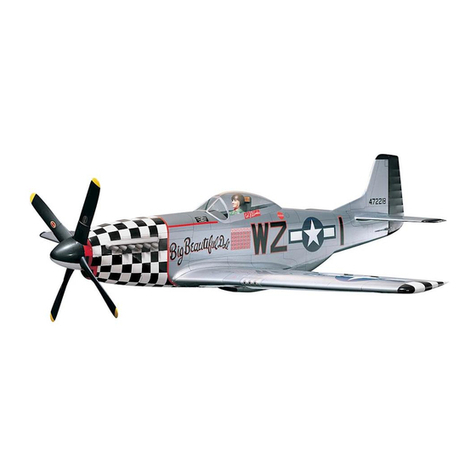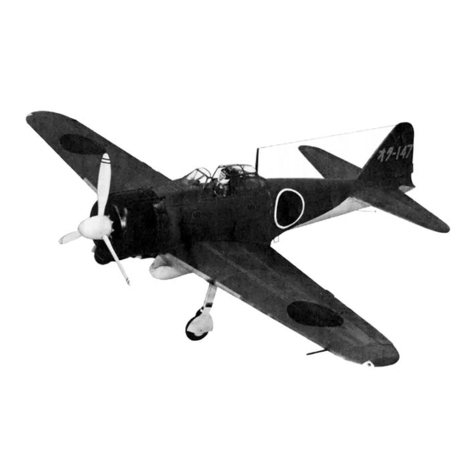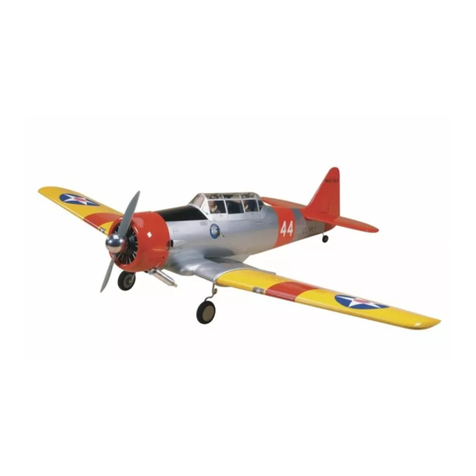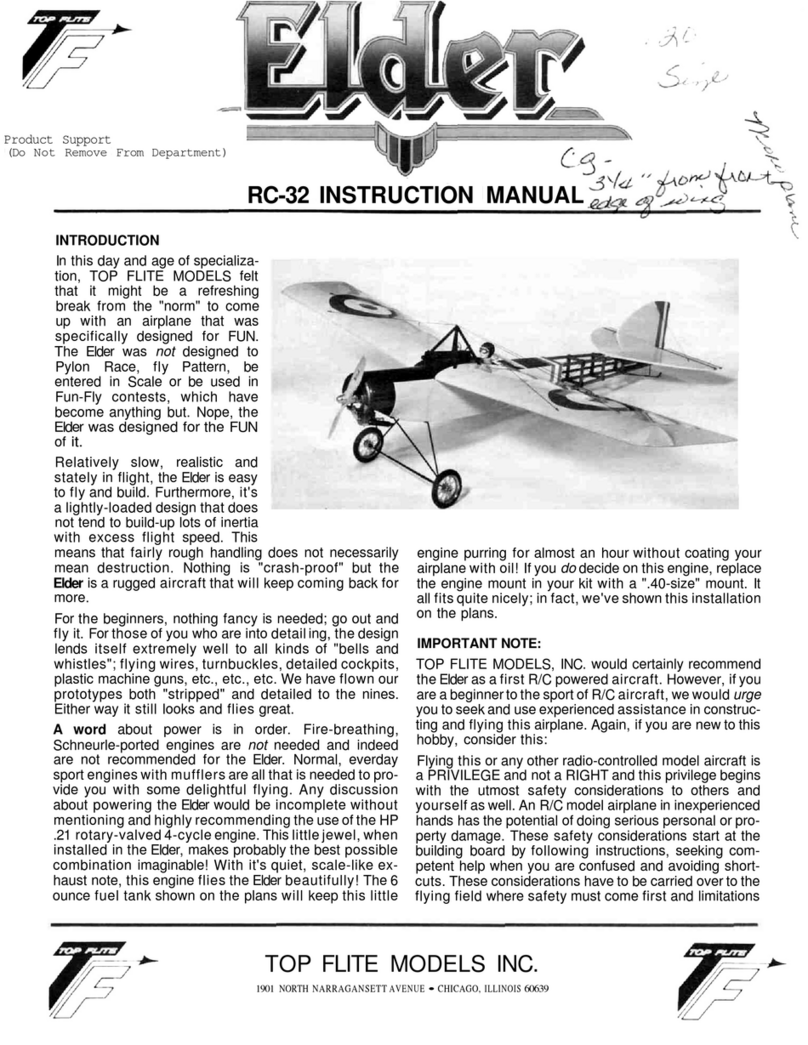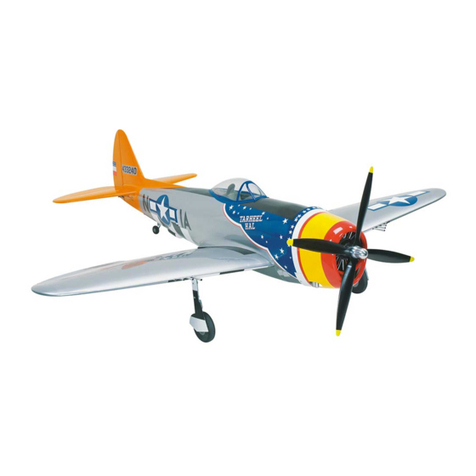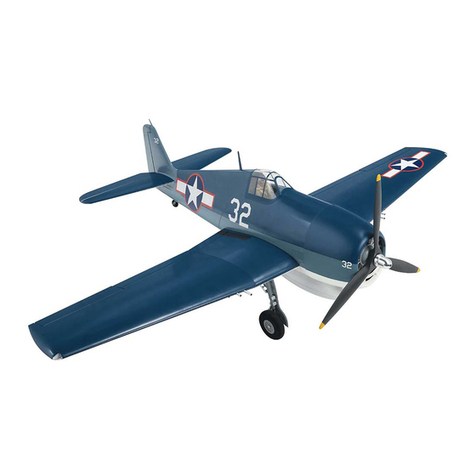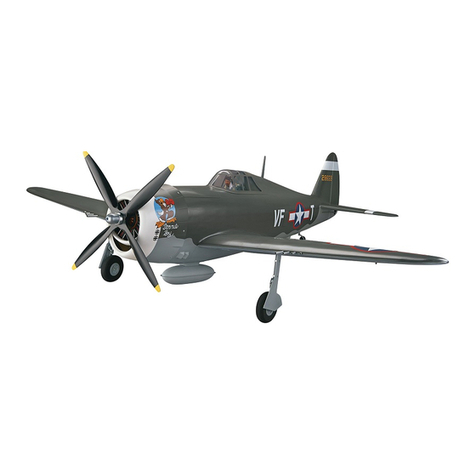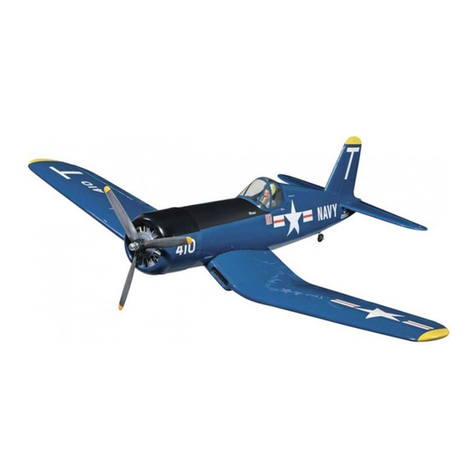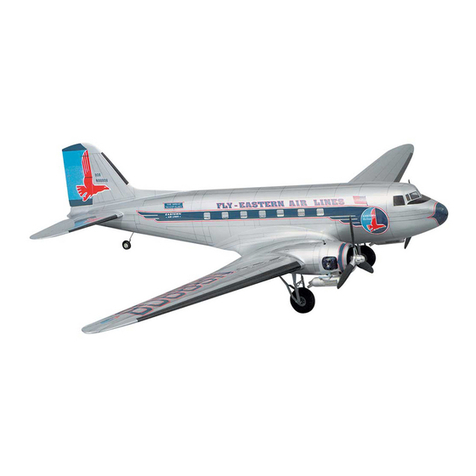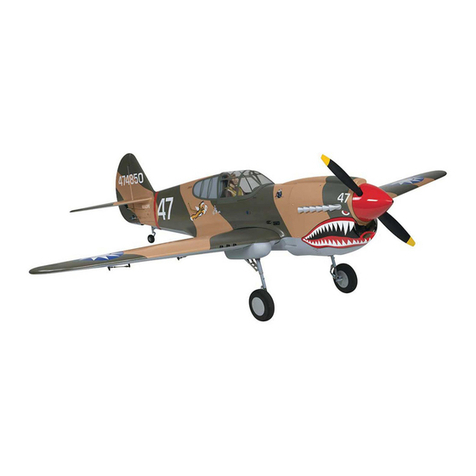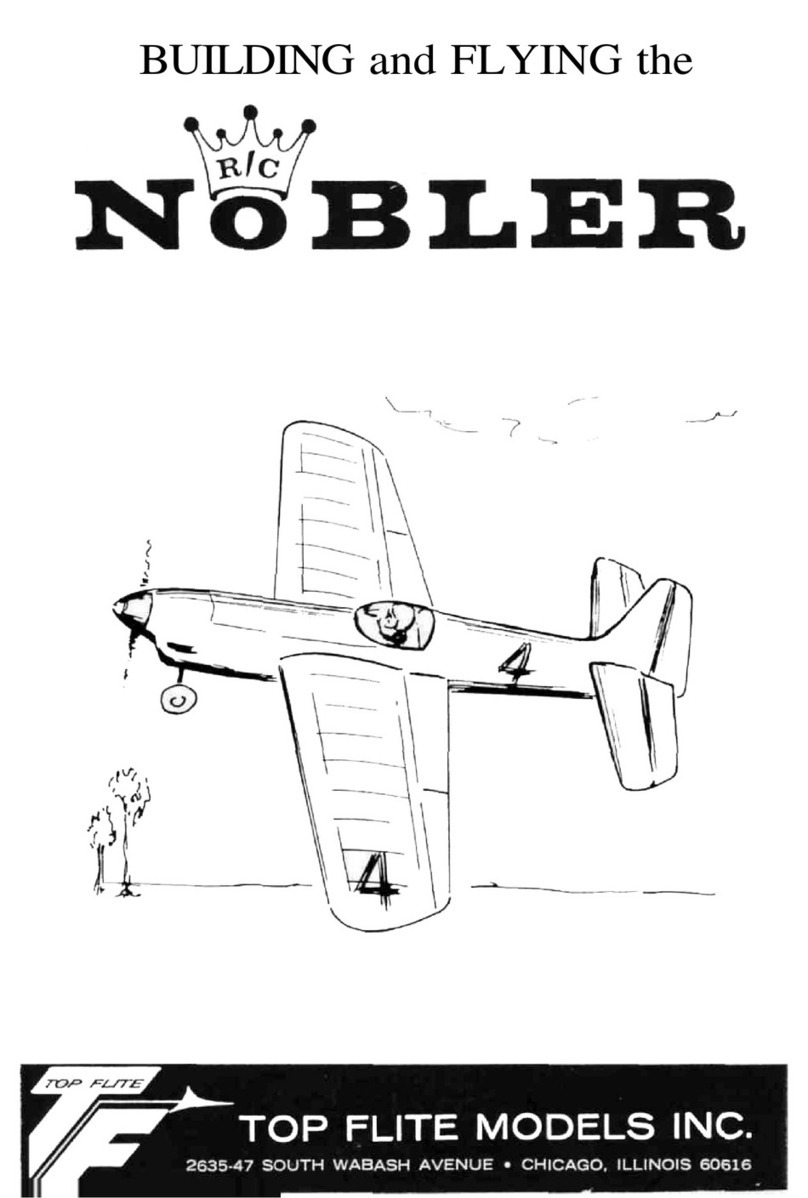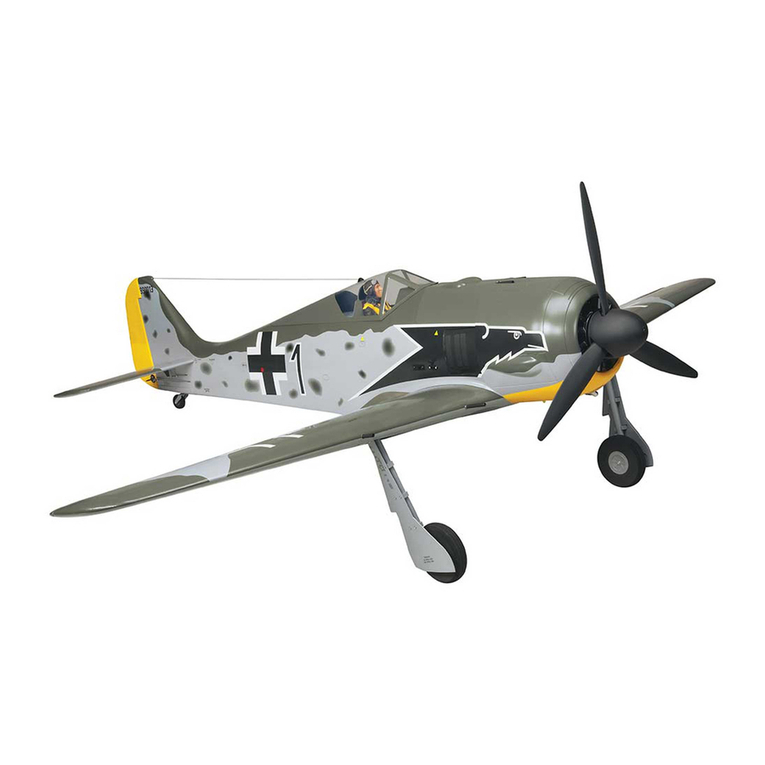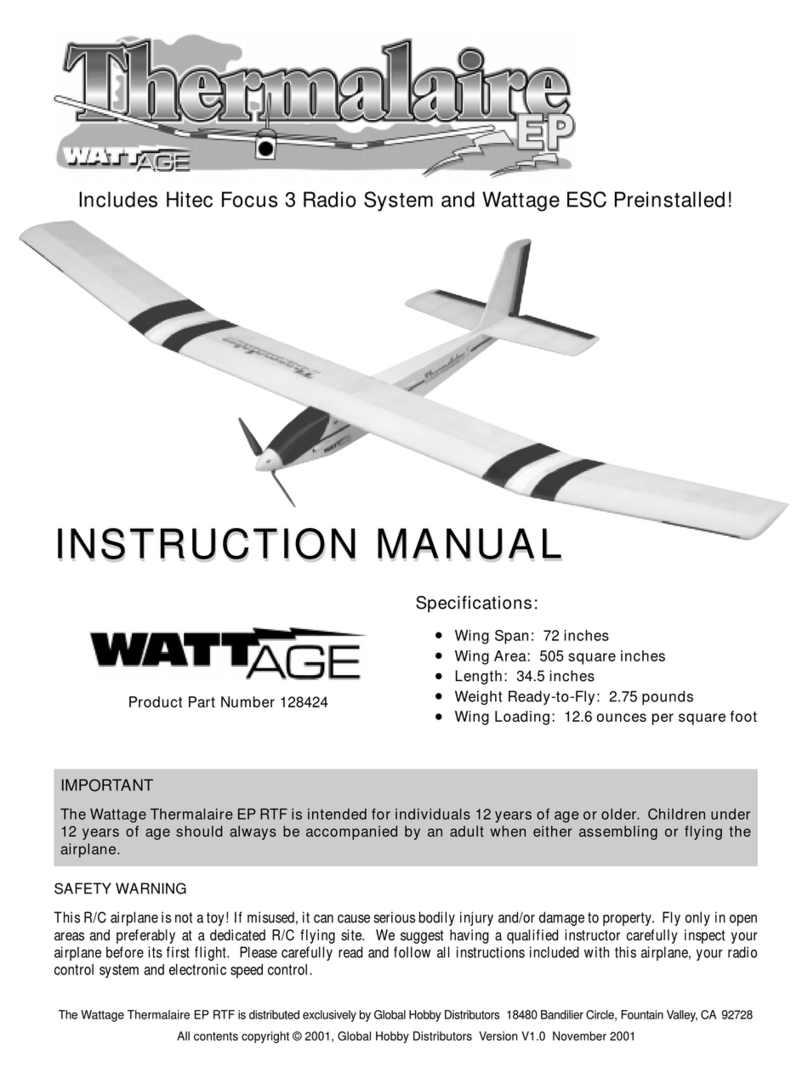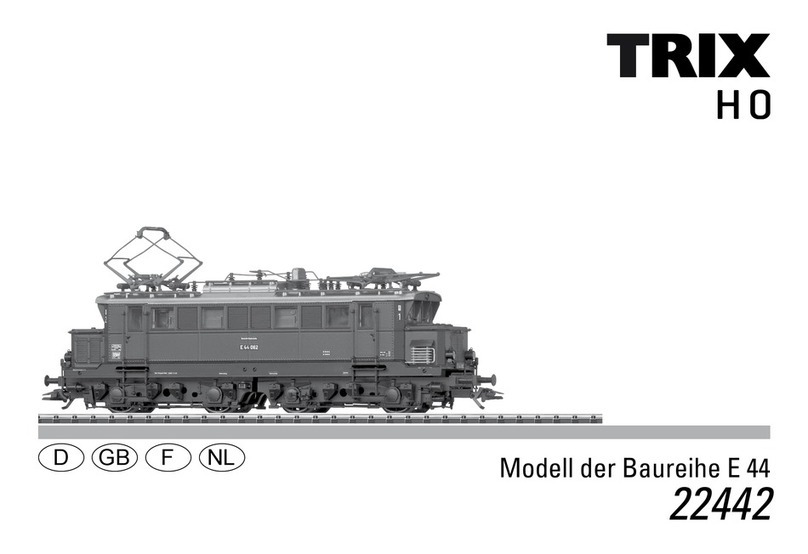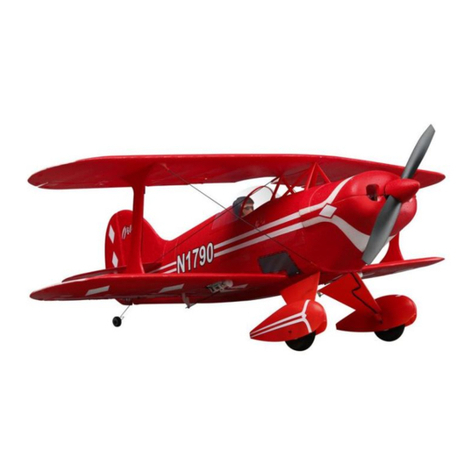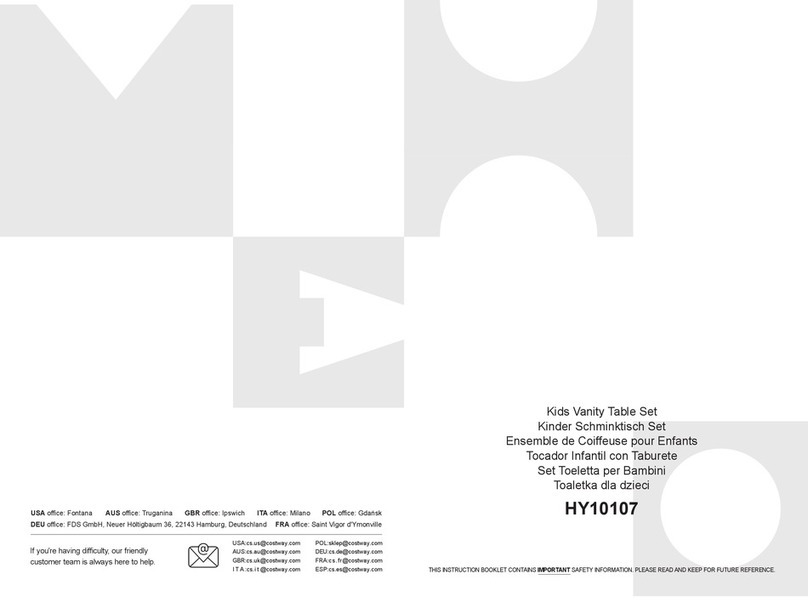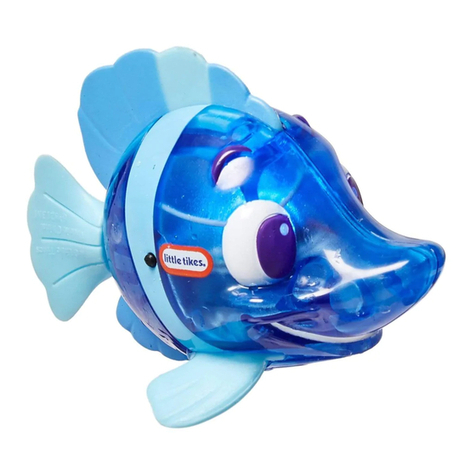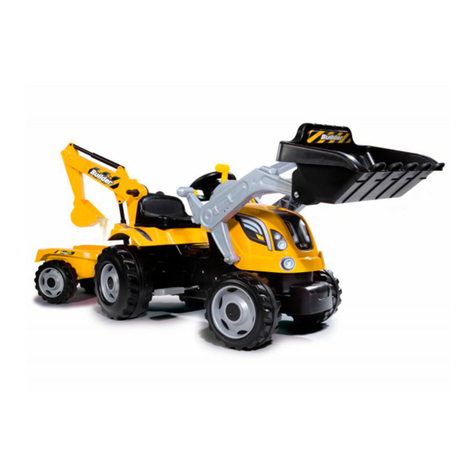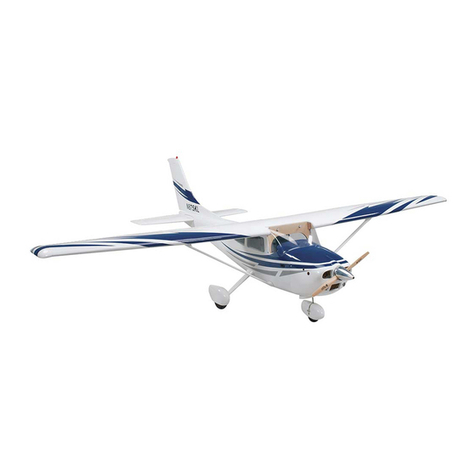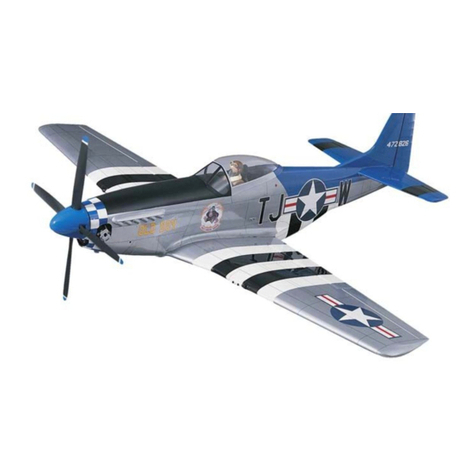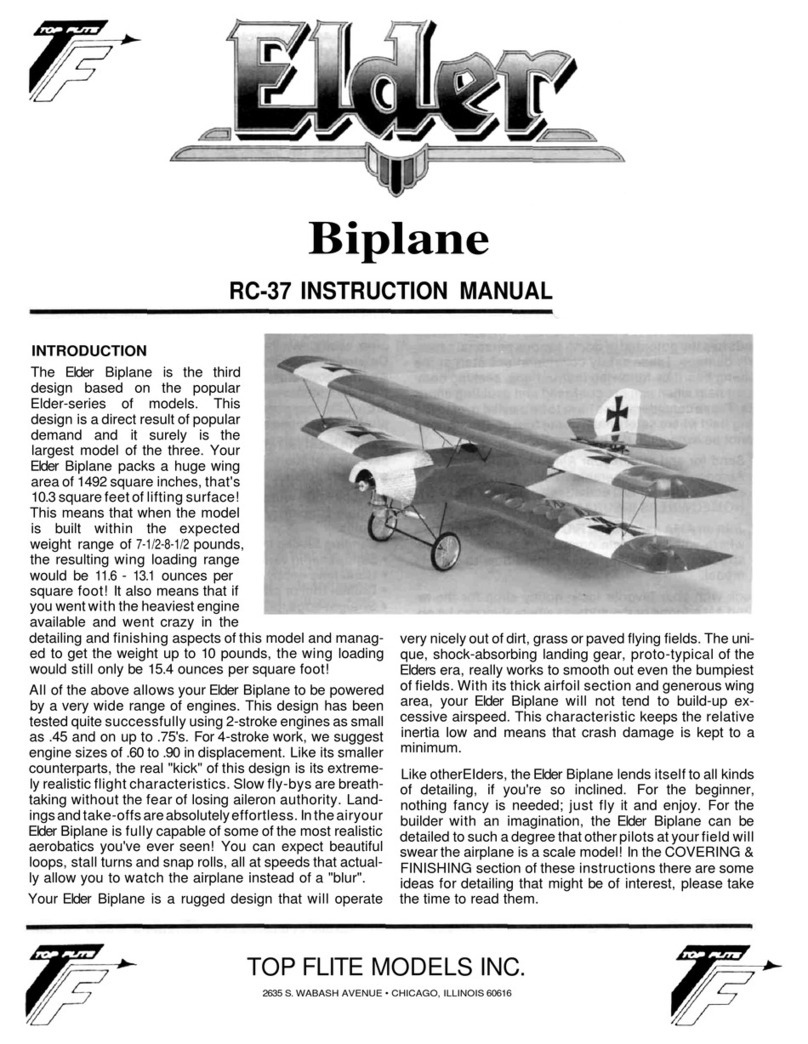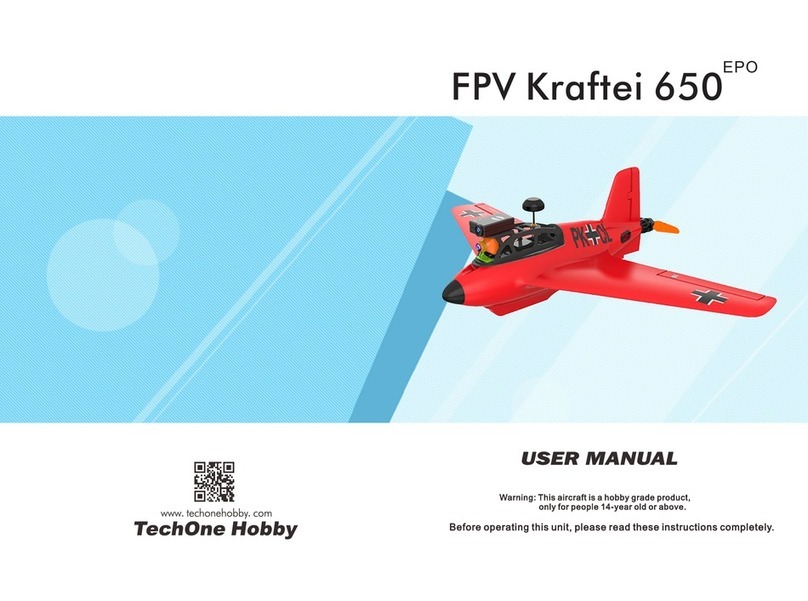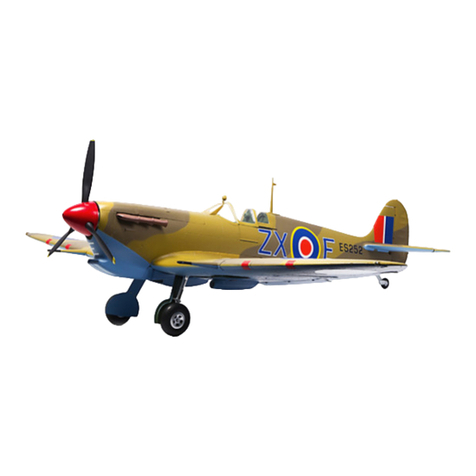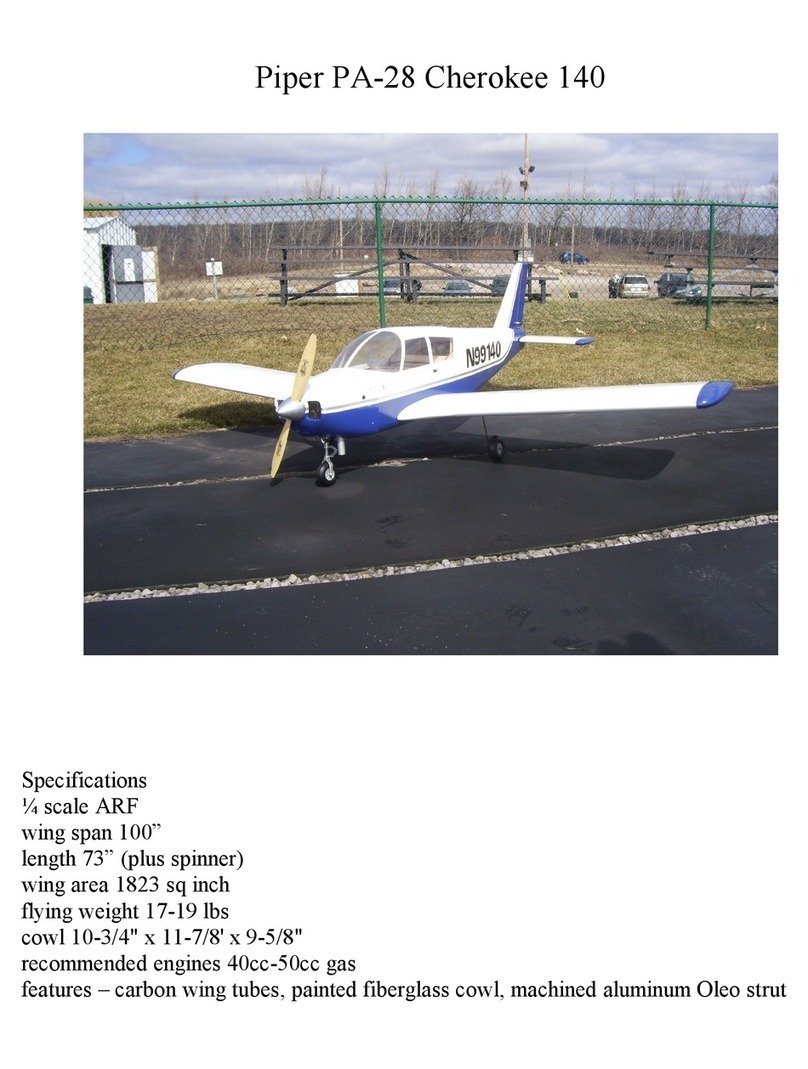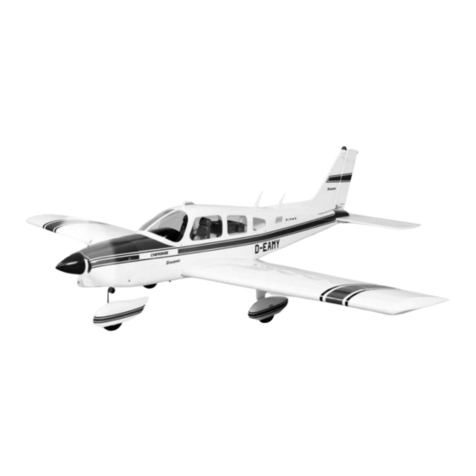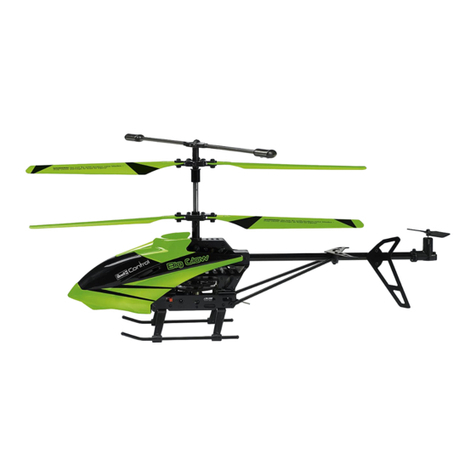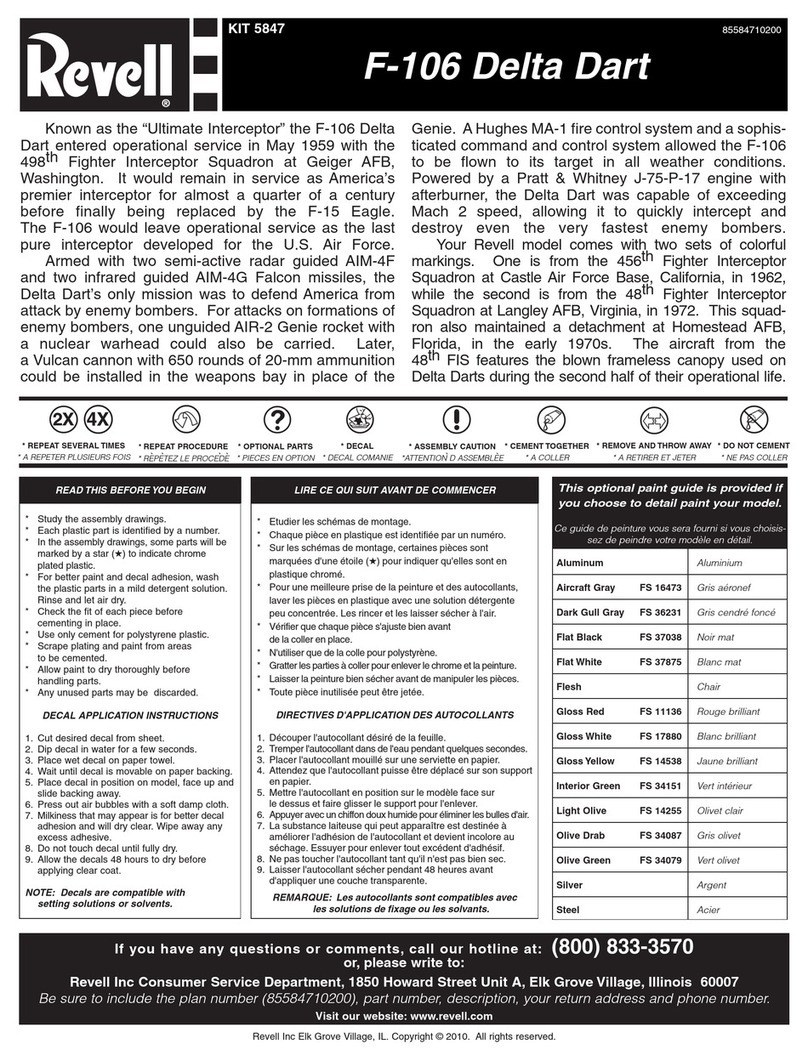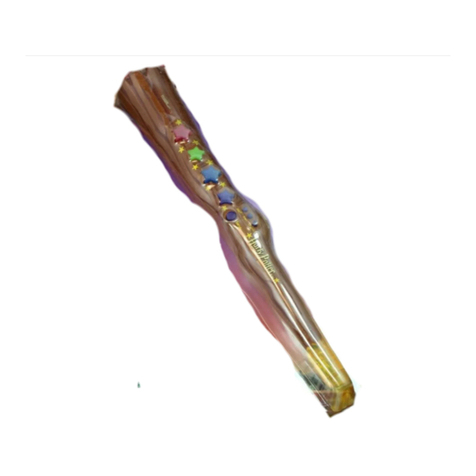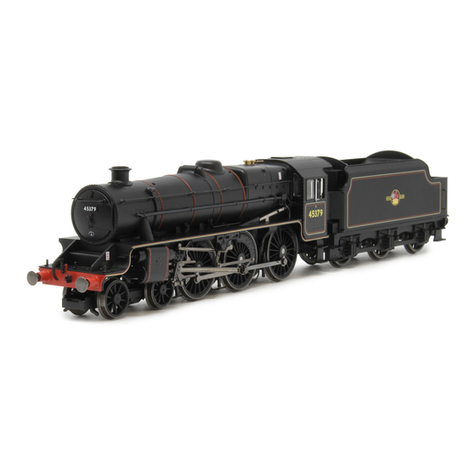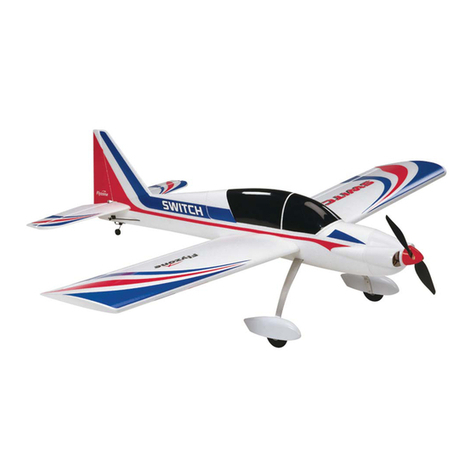TABLE OF CONTENTS
INTRODUCTION....................................................2
SAFETY PRECAUTIONS......................................3
DECISIONSYOU MUST MAKE............................4
Radio Equipment................................................4
Engine Recommendations.................................4
Landing Gear Options........................................4
Cockpit & Pilots..................................................5
Trim Scheme/Finishing Supplies........................5
ADDITIONAL ITEMS REQUIRED.........................5
Hardware and Accessories................................5
Adhesives and Building Supplies.......................5
Optional Supplies and Tools...............................6
IMPORTANT BUILDING NOTES ..........................6
COMMON ABBREVIATIONS................................7
DIE-CUT PATTERNS ........................................8&9
PREPARE TO BUILD...........................................10
Build the Tail Surfaces......................................10
Build the Vertical Stabilizer (Fin)......................10
Finish the Fin & Rudder...................................13
Build the Horizontal Stabilizer (Stab)...............14
BUILD THE WING................................................18
Make the Wing Skins .......................................18
Build the Center Panel.....................................18
Build the Outer Panels.....................................21
Fit the Fixed Landing Gear ..............................23
Fit the Retractable Landing Gear.....................23
Finish Fitting the Landing Gear........................24
Sheet the Bottom of the Wing..........................25
Mount the Hatches and Landing Gear.............26
Build the Ailerons.............................................28
Build the Flaps.................................................29
Hinge the Flaps................................................31
Mount the Flap and Aileron Servos .................32
Join the Wing ...................................................33
BUILD THE FUSELAGE......................................34
Frame the Bottom of the Fuselage ..................34
Sheet the Bottom of the Fuselage...................37
Mount the Fixed Nose Gear.............................39
Fit the Retractable Nose Gear.........................39
Mount the Engine.............................................40
Connect the Nose Steering and Throttle .........40
Cover the Horizontal Stabilizer.........................41
Mount the Horizontal Stabilizer........................43
Mount the Vertical Stabilizer (Fin)....................45
Sheet the Aft End of the Fuselage...................47
Build the Dorsal Fin..........................................48
Finish the Top of the Fuselage.........................48
Mount the Cabin Top........................................49
Fit the Tail Cone...............................................51
FINAL CONSTRUCTION.....................................53
Mount the Cowl................................................53
Mount the Wing................................................56
Build the Belly Pan...........................................57
FINISH THE MODEL ...........................................58
Covering...........................................................58
Painting ............................................................61
Final Assembly and Systems Hookup.............62
Mount the Pilots...............................................66
Glue on the External Stringers ............................67
Apply the Decals..................................................67
Add Panel Lines...................................................67
GET THE MODEL READY TO FLY .....................67
Center the Controls & Check the Directions....67
Set the Control Throws ....................................68
Balance the Model (C.G.) ................................69
Balance the Model Laterally.............................69
PREFLIGHT.........................................................69
Identify Your Model...........................................69
Charge the Batteries........................................69
Balance Propellers...........................................70
Ground Check..................................................70
Range Check ...................................................70
ENGINE SAFETY PRECAUTIONS.....................70
AMA SAFETY CODE..........................................71
IMAA SAFETY CODE.........................................71
CHECK LIST........................................................72
FLYING ................................................................72
Takeoff..............................................................73
Flight ................................................................73
Landing ............................................................73
Fuselage/Wing Plan.........................center section
INTRODUCTION
Congratulations and thank you for purchasing the Top
Flite®
Gold Edition
Piper Arrow II. One of the unique
features of this Top Flite
Gold
kit is the scale
corrugations on the vertical and horizontal stab and on
all of the control surfaces. The corrugations are
optional, but add much to the scale effect of this model.
While this kit can be assembled by intermediate
builders, note that the corrugations take additional time,
skill and patience.Read through the manual to see how
the corrugations are made and how they are covered
before making a decision. Should you decide not to
build your Arrow with corrugated control surfaces
simply replace the die-cut, corrugated skins with
regular sheeting (not included).
Another option is to build the plane with fixed or
retractable landing gear. This kit was designed to fit
Robart retracts, so should you decide to install another
brand any modifications required would be up to you.
Flaps are another option. The manual is primarily
“geared” toward building the Arrow with flaps, but
instructions are also provided for building the model
without flaps.
Lastly, the cabin top is vacuum-formed from a clear,
PETG plastic sheet.The window outlines are molded
in.Finishing the cabin top requires masking, sanding
and painting around the windows. Since the cabin
top is molded from PETG, it may be painted withTop
Flite LustreKote®.
The level of scale detail you wish to achieve is up to
you. Simply by following the instructions you’ll end up
with a model that very much represents a Piper Arrow
II. But you could also “go all-out” by adding even more
scale details to make a model that would be a
contender in any level of scale competition.
For the latest technical updates or manual corrections
to the Piper Arrow visit the Top Flite web site at
www.top-flite.com.Open the “Airplanes” link, then
select the Piper Arrow. If there is new technical
information or changes to this model a“tech notice”box
will appear in the upper left corner of the page.
- 2 -




















